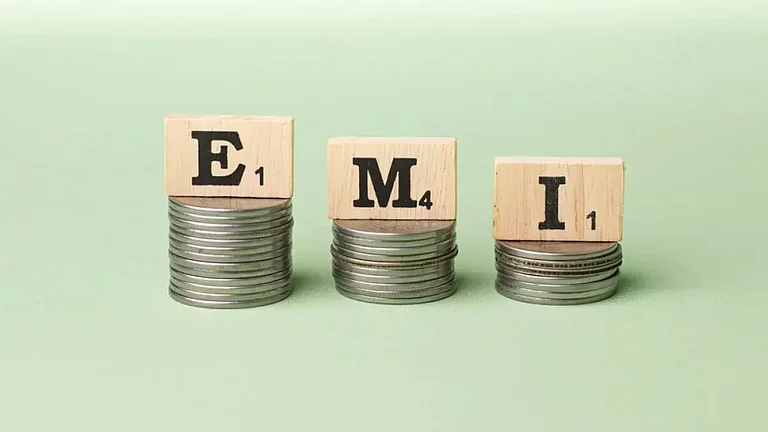
Summary of this article
FD yields can mislead; always check real compounded return carefully.
Compounding frequency changes FD growth, affecting final maturity amount significantly.
Banks may inflate FD returns; confirm accurate numbers before investing.
By Chakrivardhan Kuppala,
For most Indians, fixed deposits (FDs) are more than just a savings option - they’re a habit. They’ve been around forever, they’re offered by every bank, and they carry that comforting label of “safe investment.” But if you’ve ever looked at the numbers in those flashy bank brochures - especially the so-called yield - there’s a chance you’ve been shown only half the picture.
Let’s take a closer look.
Interest Rate vs. Yield: Two Sides of the Same Coin? Not Really.
Banks love throwing around terms like “annualised yield” and “effective yield.” Sounds technical and accurate, right? But don’t be misled.
Here’s what happens in reality.
The interest rate is simple - it’s basically the percentage of the funds you park in the bank account. Banks says they will pay this at every quarter-end. Yield, though, digs a little deeper. It includes how often the interest is added to your account - monthly, quarterly, or yearly. It paints a more realistic picture of what your money will actually grow into.
So if the bank says it’s offering 6 per cent interest per year, you need to ask: How often is that interest getting calculated? Because that changes everything.
Why Yield Actually Tells You More Than the Interest Rate
Let’s say you put Rs 1,00,000 in a fixed deposit at 6 per cent interest, compounded every three months.
Here’s how that plays out:
After 3 months, your Rs 1 lakh becomes Rs 1,01,500. For the next 3 months, the interest applies not on Rs 1 lakh, but on Rs 1,01,500. So you earn a little more. This keeps happening - quarter after quarter. By the time the year ends, you’ll have around Rs 1,06,136. Not bad, right?
Compare that to the Rs 1,06,000 you’d get if the interest was calculated just once a year using simple interest. That tiny difference - just Rs 136 - is thanks to compounding, and it pushes your real return to 6.14 per cent, not 6 per cent. It may look like a small bump, but over time, and with larger sums, that difference becomes serious money.
Here’s Where It Gets Sneaky
Let’s say you go in for a 3-year FD with Rs 1,00,000 at 7 per cent interest, compounded quarterly. At the end of 3 years, your money grows to around Rs 1,23,000.
Now, some banks will try this move:
They subtract Rs 1,00,000 from Rs 1,23,000 and get Rs 23,000 as your “profit.” Then, they divide that Rs 23,000 by 3(for 3 years), which gives Rs 7,666.67 per year. Then, they divide that by your original Rs 1,00,000 and show your “annual return” as 7.67 per cent.
Looks good on paper, but here’s the catch - that’s not your actual yearly return. The real return - the one that factors in compounding - is closer to 7.19 per cent. That 0.48 per cent gap might look harmless, but imagine millions of investors being shown inflated returns. That adds up to crores of rupees misjudged in the long run.
Why This Actually Matters
When you’re looking at mutual funds or bonds, the returns are usually shown using clear and honest metrics:
CAGR – Compounded Annual Growth Rate
YTM – Yield to Maturity
These numbers always include the effect of compounding. So when you’re comparing financial products, you’re comparing apples to apples. But if a bank shows you a simple average and calls it “yield,” they’re slipping in a banana and calling it an apple. It’s not the same thing.
This kind of confusion can lead people to pick the wrong product - especially when they’re locking in large amounts for years. And if you are planning your life based on these inflated numbers, it could actually fail your entire financial plan.
So, How Do You Spot the Real Picture?
1. Look Past the Big, Bold Yield
Always check the actual interest rate. That’s the cleanest number. Yields can be tweaked with fancy math, but the base rate tells you how generous (or not) the offer really is.
2. Check How Often They’re Compounding
Most banks in India calculate interest quarterly. That’s good, because more frequent compounding means slightly higher returns. But if they’re quoting simple interest or hiding compounding details, be cautious.
3. Do the Maturity Math
Instead of getting distracted by percentages, ask yourself:
“What fixed annual return would grow Rs 1,00,000 into this final amount in X years?”
That’s your real return. That’s your true yield. And it’s usually a little lower than what the bank claims in bold.
Final Thought
The numbers you see in FD ads may look simple, but they’re often dressed up to look better than they are. Yield - in the proper sense - is the compounded return that takes your Rs 1,00,000 and turns it into something bigger over time.
But banks aren’t always consistent. Some use real compound interest. Others rely on plain averages.
And the difference between those two?
That’s where many people end up losing out - not because they picked a bad investment, but because they misunderstood what they were really getting.
So next time you see an FD promising a juicy yield, pause for a second. Run the numbers. Check the assumptions. Because when it comes to your money, the fine print can make a big difference.














